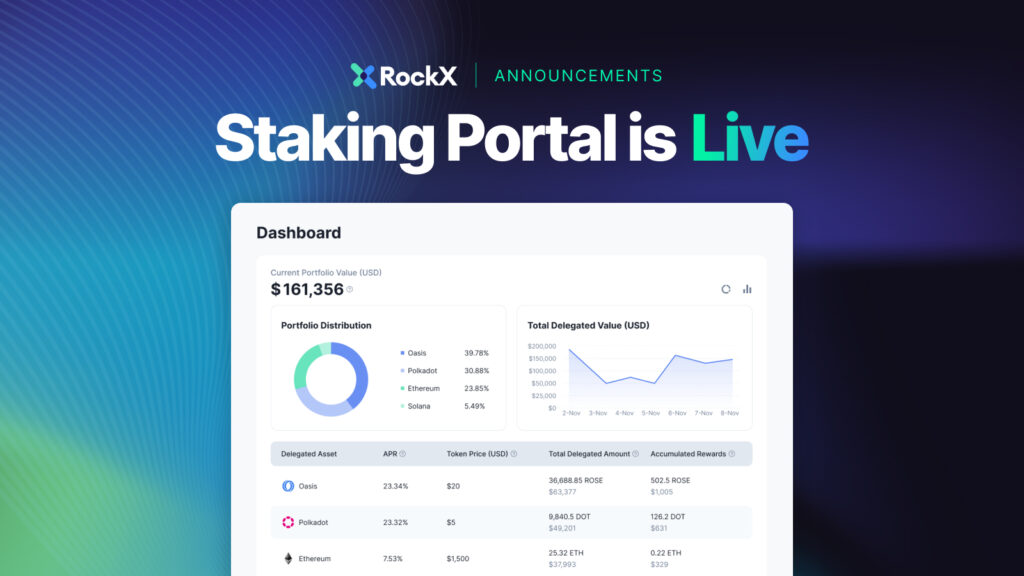When it comes to earning a return on your cryptocurrency holdings in the decentralised finance (DeFi) sector, there are a few options. Two of the most popular are DeFi lending and staking. But which one is better?
Well, there’s really no easy way to answer this question as it depends on your individual goals and risk tolerance. Both are great passive income options. DeFi lending, however, can be a bit more volatile and requires monitoring. As for staking, it depends on which network you are staking on. To help you decide, we will take a closer look at each option.
Understanding DeFi Lending and DeFi Staking

For crypto holders in it for the long haul, the one benefit you get from staking or lending your crypto is putting your idle-sitting assets to work. However, smart contract vulnerabilities are one of the biggest risks with both methods. You could lose your funds if a DeFi platform is hacked or a bug in the platform’s smart contract. To avoid smart contract risk, certain types of staking, such as non-custodial staking, might be worth looking into. They require a bit more effort, but the payoff in security is even greater.
However, when approached with caution and reasonable expectations, both lending and staking can help you get your money working for you.
With DeFi lending, you stand to gain from lending your crypto on a decentralised platform and collecting interest from individuals taking out cryptocurrency loans. The interest rates are typically higher than what you would earn from a traditional bank, making this a popular option for those looking to maximise their earnings.
However, DeFi lending comes with some risks. For one, you are relying on the borrower to repay the loan, which they may fail to do if the market worsens. This leads us to the next risk, which is the liquidity risk of the DeFi lending platform — if there is not enough liquidity on the platform, you may not be able to get your money out when you need it. Additionally, the lending rates set by the platform can vary over time, depending on the popularity of a particular asset.
Finally, users of DeFi lending platforms should be aware of the potential for capital loss. DeFi lending platforms are still relatively new and subject to several regulatory risks. If a DeFi lending platform is not properly regulated, it could be shut down by a government or financial institution, and users could lose their funds.
Some popular lending protocols include; Aave (AAVA), Maker (MKR), Compound (COMP), Kava (KAVA), Venus (XVS), Alchemix (ALCX), Solend (SLND), Umee (UMEE), and Bifrost (BNC).
DeFi staking, on the other hand, is more widespread and increasingly gaining traction thanks to the rising number of Proof-of-Stake (PoS) blockchain networks such as Ethereum (ETH), Polkadot (DOT), and Cardano (ADA).
Staking is a process of pledging your crypto to help the network validate transactions as well as secure them. In return for this, you earn rewards, usually in the form of native tokens. Staking is a fairly passive way to earn a return, which makes it a popular option for those who don’t want to take on too much risk.
However, staking typically requires you to lock up your crypto for a period of time, which means you won’t be able to access it if you need it. But the growing number of liquid staking platforms offers a solution to this problem. Additionally, there is an unbonding period, the amount of time you must wait before gaining access to move or sell your tokens. This time varies between a few days to a few weeks. During this period, staked assets don’t earn any rewards.
Lido (LDO), Persistence (XPRT), Rocket Pool (RPL), Stride, Crescent (CRE), DeFi Swap (DEFC), and AQRU are popular staking protocols.
How Do DeFi Lending and DeFi Staking Work?

Spurred partly by lower interest rates in traditional markets and in response to risks in actively trading, lending, and staking, they are becoming increasingly popular as rewarding holders as they accumulate their preferred tokens and coins.
DeFi lending or staking provides capital to DeFi protocols to earn a return on your crypto holdings. This can be done by lending your crypto assets to protocols that offer lending services or by staking your assets to protocols that offer staking services. In both cases, you can earn a return on your assets, though the return may differ depending on your chosen protocol.
You can lend or stake your cryptos from a smartphone if you want to — it is essentially a glorified wire transfer. Lending platforms match you up with borrowers, allowing you to deposit crypto that you want to lend, then loan it on your behalf, giving you a return in return over time.
DeFi platforms let you lend out tokens to borrowers through smart contracts and earn rewards directly when your cryptocurrency is borrowed. Crypto holders may use a lending platform like Compound or Aave or can offer their liquidity directly to the exchange, like Uniswap or PancakeSwap. Because liquidity providers offer their funds in specific liquidity pools, other users can lend, borrow, and exchange cryptocurrency. Today, the most popular DeFi protocols run on the Ethereum network and pay governance tokens back to liquidity providers.
But remember, the higher the interest rate you go for, the more risk you take on, but the higher the potential return. You will also have to choose the duration of the loan, which will impact the amount of interest you earn.
Now, the process of DeFi staking involves locking up cryptocurrency assets into smart contracts in exchange for becoming a validator of either the DeFi protocol or the layer-1 blockchain. Essentially, users become a part of a network validator when they stake their crypto assets into a DeFi system.
DeFi staking is one of the easiest ways to make money on the crypto assets you are already planning to hold. It is a rewards-type system that involves locking cryptocurrency assets into a crypto wallet for a certain amount of time to validate transactions, contributing to the blockchain network’s efficiency and security, and earning the stake rewards in exchange.
Staking has a lower barrier of entry, with many users being able to stake just a small amount to begin earning rewards. Investors can also make use of staking pools where smaller users collect their tokens together into a pool to increase the chances of earning rewards for their stake. Staking pools involve pool operator fees, and the reward is potentially lower as it’s divided among more investors.
While staking does not come with the same regulatory concerns as lending, it comes with volatility risks. Additionally, a drop in the network’s value would also impact your asset’s value.
Crypto staking via DeFi platforms is still expected to significantly impact the financial world, providing investors with new opportunities for earning passive income.
So, Which is Better?

DeFi lending and staking have seen tremendous growth in recent months as more and more users are drawn to the benefits of decentralised platforms, including increased transparency, security, and trustlessness. In addition, they often offer much higher interest rates than traditional platforms, making them more attractive options than those in traditional finance.
As for which is the better option, staking provides you more options in terms of various types of staking – online staking, staking pools, cold staking, and more. With lending, you can only choose between various lending providers and which currency to lend, exposing you smart contract risk. However, the barrier to entry is lower for lending as there is typically no minimum required amount to lend. With staking, some networks, such as Ethereum, require a minimum amount to stake. In the case of Ethereum, it is 32 ETH. You can get around this through staking pools. However, that exposes you to more risk.
But there is no easy answer to which one is better. If you enjoy participating directly in a protocol, maybe staking is more your speed, whereas lending might be a better option if you are looking for a quick and easy interest payoff. As we saw, both have advantages and disadvantages, and ultimately it depends on each individual’s needs and preferences.
Try Secure Staking With RockX

RockX has recently launched their brand new staking portal, which makes it extremely simple to stake. While staking can be a complicated process, with this new dashboard, staking only takes a few clicks. RockX has been in the staking business since 2017, and handles institutional clients and high staking volumes, so you can be sure that their infrastructure is top-tier. If you’re looking for a place to start staking, RockX, with its extensive portfolio, history, timely updates and high security, is a great place to start.









